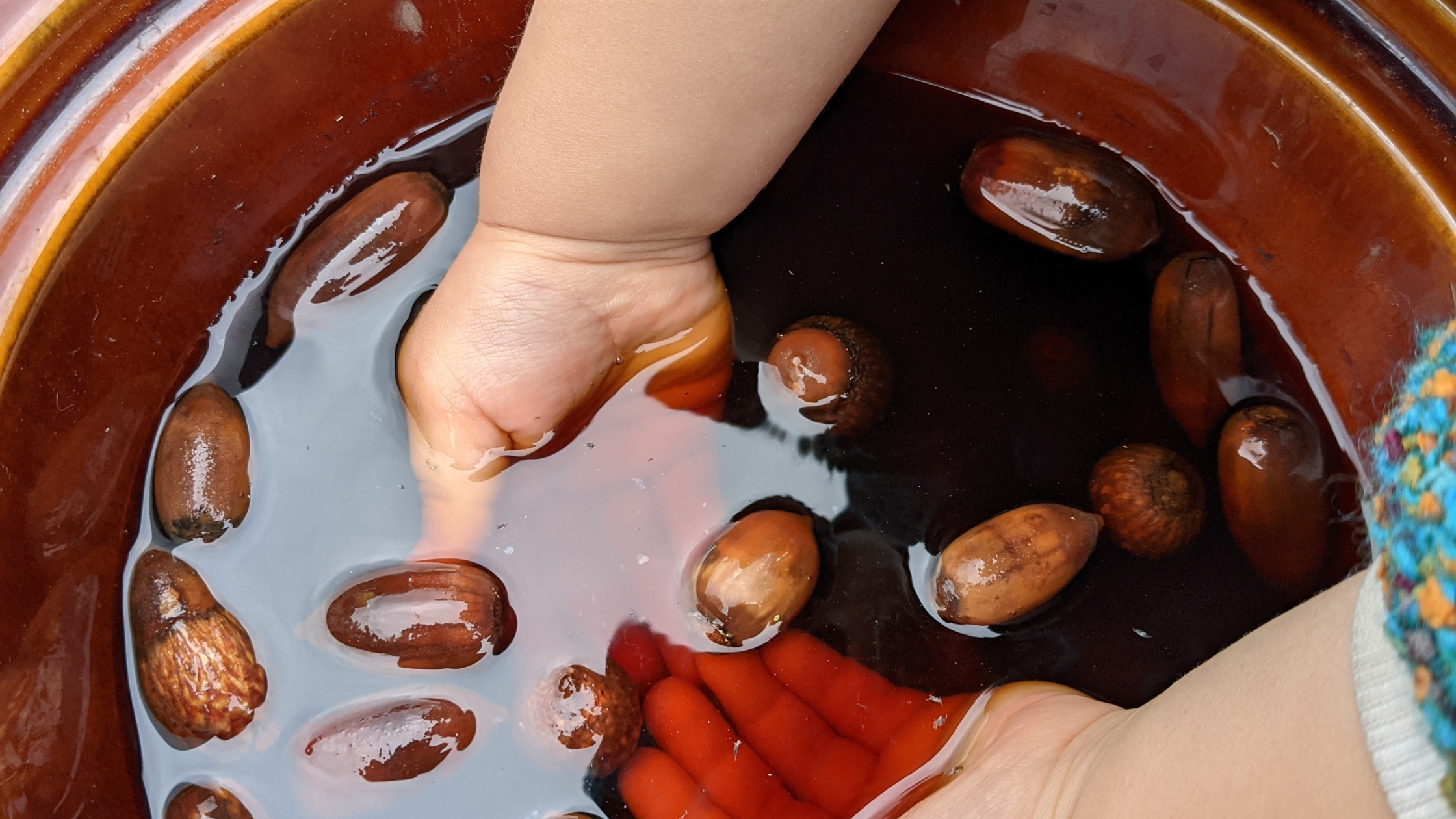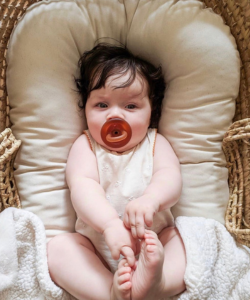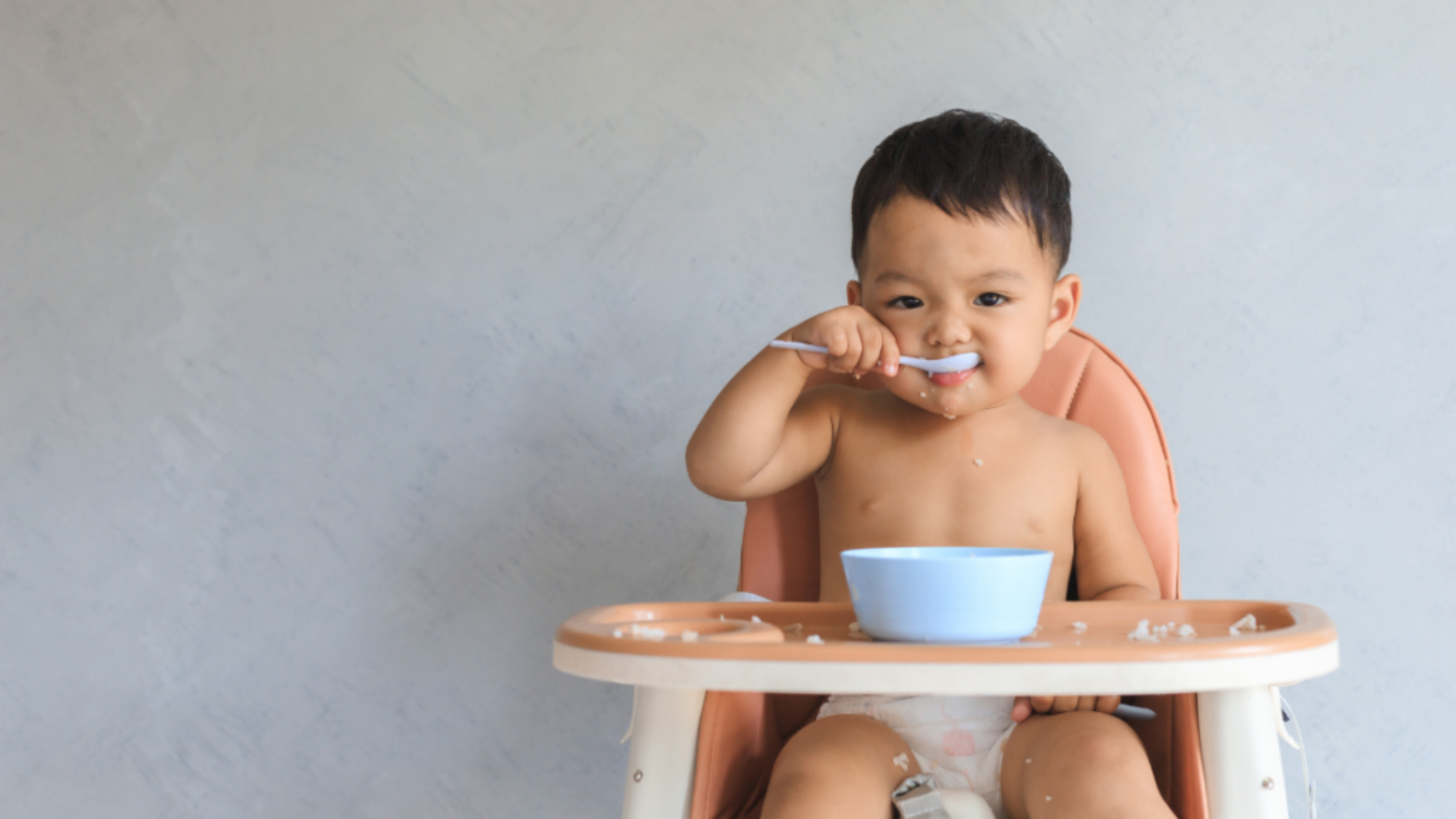
Natural Dying with Acorns
It's Winter, the wind is howling, and I’m awakened by acorns plip-plopping on my skylight window. Our two Black Oak trees have finally lost the last of their glorious bounty, and my excitement sets in--it's time for Acorn dyeing!

Plant dyeing with children is absolutely magical! The process of collecting, soaking, observing and the big reveal after a week of watching, is fun and exciting. We began by collecting two buckets of acorns--any part of the acorn will do--for our acorn soup. In the pot they go!

We ask, “What color will the clear, clean water turn?” My group of children is between 2-2 ½ years old. The next day, and each day after--for one week--the children come to school, open the lid, and dip their fingers and hands into the acorn soup. Sounds of "ooh" and "ahh" fill the area as we notice the acorn soup turning a darker color each day--red, brown, combinations of both and, black.

It’s time to prepare our fabric. I have cotton napkins to share. One-by-one, the children come and wrap rocks in their own napkins with string. We remove the acorns from our soup and drop in our cloth and rock creations. Waiting is a big part of this project!
I love that there can be a pot of magic happening behind the scenes while we play.
The fabric can remain in the acorn soup for a week and even be heated in the end, to keep a subtle golden brown. The color I’m looking for, however, will only come through when we replace our acorn soup with 'iron water.'

Be sure to start a small 8oz jar of iron water prior to your acorn soup; 10 rusty nails, half and half water and white vinegar, and voila! I removed the nails and now have iron water perfect for dying with. Upon meeting, the iron water will turn the reddish-brown stained fabric to gray!
The chemical reaction of turning the acorn brown soup into a rich silvery gray will be enhanced with heat. I simmer our wrapped material for 1-hour on low heat. Then, after cooling, I unwrapped our rocks and laundered the napkins. Our big reveal was beautiful! They were all so unique, and will be perfect for place settings, handkerchiefs, or even a covering for a small table.

Acorns have an enormous amount of tannins within them by the time they are falling from the tree. They can be reused a couple of times and even saved in a cool dry place for later dye projects. They are one of the few resources that don’t need anything to set the color into natural fibers unless, that is, you're looking for the extra magic offered by the iron water!





Leave a comment
This site is protected by hCaptcha and the hCaptcha Privacy Policy and Terms of Service apply.